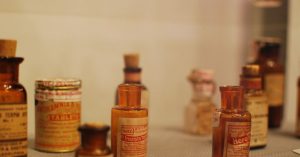 Here’s a fascinating brief overview of the history of drug epidemics in America. Since the late 1800’s, it feels almost continuous. As if just a few years after one ends, we see signs of a new one. Drug epidemics take time to establish, peak, and decline. But if there’s already another on the way, how much difference can that make?
Here’s a fascinating brief overview of the history of drug epidemics in America. Since the late 1800’s, it feels almost continuous. As if just a few years after one ends, we see signs of a new one. Drug epidemics take time to establish, peak, and decline. But if there’s already another on the way, how much difference can that make?
There is evidence that the current opioid epidemic– the one that began in the late 1990’s with the introduction of new synthetic opioids for treatment of pain– may have passed its peak. That’s measured by the number of new cases in successive years. That’s normally a good sign, but two related problems mean things could well get worse before they get better.
The emergence of fentanyl— the introduction of cheap synthetics such as fentanyl and carfentanil in the existing drug supply chain makes overdose, especially the fatal sort, that much more likely. Imminent death from a single use is a real possibility now, far more so than in the early days of the epidemic.
The increased risk of HIV/ AIDS— we have superior treatments now, but AIDS remains one of the scariest diseases around– both for its victims and for those involved with them. This is an STD, remember. Many of the precautions we taught individuals to take in the ’80s have faded from common practice. We’re vulnerable again.
For me, the opioid epidemic comes in three parts– addiction, overdose, and HIV/AIDS. The damage it does to society also takes multiple forms:
Health and medicine: There’s a truly huge impact on healthcare, first through emergency services, later through the expense of care, often very long-term, for the diseases and disorders associated with drug use.
Law and law enforcement: The Courts and police feel the impact through street crime, including violence; arrest rates, and incarceration. The associated costs are enormous, and represent a drain on the limited resources of many communities. There are also problems associated with efforts to restrict trafficking, improve border security, break up drug gangs, etc.
Community life: Drug epidemics do disproportionate damage to vulnerable people and the communities where they live. Costs related to prevention efforts, social programs, child services, and educational institutions often hit the social services sector, and are largely unfunded. Ask any family or child support worker about the impact of the epidemic on youth, child protection, the foster parenting system, income assistance programs, intact families, etc.
In terms of the budget, a drug epidemic of this size and persistence is akin to a big leaky hole in the bottom of a ship. If we don’t repair it, it gets bigger. If we do, we experience dramatic short- and long-term benefits. But the repair isn’t cheap, and the outcomes require some patience. And that’s why efforts often fail. America loses patience. We give up too soon.
In a way, it’s like those giant corporations that once thought in terms of five-year plans and now obsess over quarterly earnings. Short-term thinking is not a good way to solve a long-term problem.
To address the current epidemic, we need to answer three questions.
- What do we need to do to lower the rates of opioid addiction, overdose and disease transmission? The solution to one may not be the solution to the others. We’ll have to integrate them.
- What do we need to do to reduce the supply of drugs, and minimize the crime, incarceration, and criminal recidivism related to drug use? Drugs are produced both inside and outside the U.S.
- What do we need to do to offset the damage that’s been done to our people, our institutions, and even to future generations?
One caveat: this time around, let’s try basing our proposals on evidence, not ideology. We have a big advantage over earlier epidemics: More and better evidence! The sort that wasn’t around 50 years ago.
Let’s use it.










